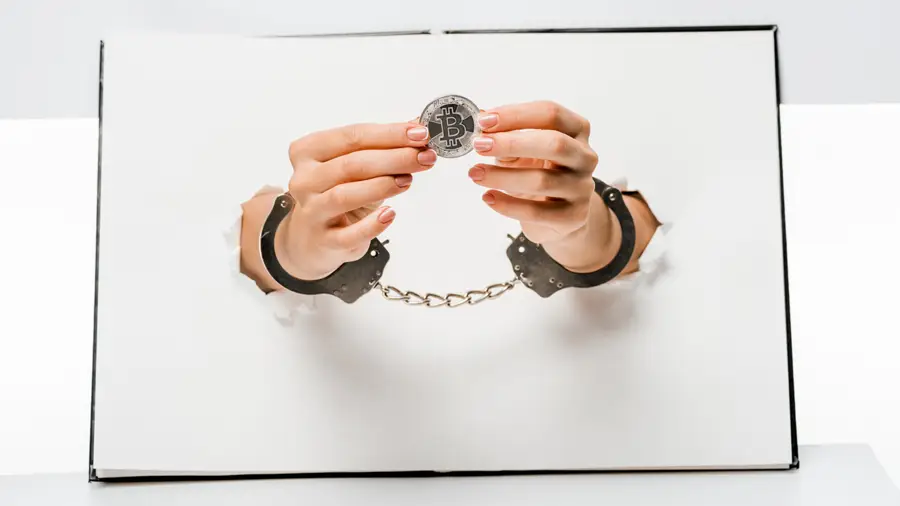- The British Pound is facing significant pressure as the Bank of England seems reluctant to raise interest rates further.
- BoE’s Swati Dhingra said the current interest rate policy is tight enough.
- UK services sector shrinks after six months of expansion as consumer spending weakens.
The British Pound (GBP) eased significantly on rising risk aversion and dovish comments from Bank of England (BoE) Governor Andrew Bailey and Chief Policy Officer Swati Dhingra on the September policy decision. . GBP/USD is expected to remain on edge as policy divergence between the Bank of England and the Federal Reserve (Fed) is likely to persist if the UK central bank decides to pause tightening. monetary politics.
Swati Dhingra declared on Wednesday that the current interest rate policy is tight enough and further rate hikes would make the economic outlook vulnerable. The loss of momentum in consumer spending and the deterioration in demand have started to affect the services sector, according to the latest survey data. The UK services PMI, which measures business activity in the sector, pointed to a contraction in August for the first time since January.
Daily summary of the movements in the markets: The British pound remains vulnerable due to the risk aversion state.
- The British pound hovers below the psychological support of 1.2500 as Bank of England (BoE) Governor Andrew Bailey casts doubt on further tightening of monetary policy.
- BoE Governor Andrew Bailey said the central bank is closer to ending its interest rate hike cycle, but is unlikely to cut rates to ensure inflation is removed from the economy.
- On the inflation outlook, Bailey said many of the indicators are moving in the right direction, a sign that the decline in inflation will continue.
- BoE monetary policy officer Swati Dhingra, who has voted to keep interest rates unchanged at recent policy meetings, said interest rates are already at high levels and further tightening could hurt to the economy.
- The pound sterling came under heavy pressure as expectations of the policy divergence between the Fed and the BoE have increased.
- The British economy has the highest inflation rate of the G7 economies. Comments about a stable interest rate policy could raise consumer inflation expectations.
- The absence of further interest rate hikes could safeguard economic prospects from further vulnerability, but it could also mean higher inflation in the future, further reducing real household income.
- Following the vulnerable manufacturing PMI data, a PMI index measuring the country’s service sector also fell below the 50.0 threshold for the first time since January.
- It appears that the cooling effects of the interest rate hike are affecting spending and confidence in both UK households and corporates.
- Tim Moore, Director of Economics at S&P Global Market Intelligence, said: “Service providers saw client spending reverse course during the month of August as rising borrowing costs, weak consumer confidence business and strained household finances acted to reduce selling opportunities.
- Following Andrew Bailey’s comments on interest rates, uncertainty has increased about the monetary policy meeting scheduled for September 21.
- Market sentiment remains cautious as the global economy is exposed to further uncertainty due to interest rate hikes by Western central banks.
- The attractiveness of the dollar continues to improve as fears of a recession in the US economy fade.
- The US services sector was more resilient than expected in August. The ISM reported that the services PMI rose to 54.5 against expectations of 52.5 and July’s reading of 52.7. The service sector accounts for two-thirds of the US economy, so an upbeat service sector indicates economic strength despite high interest rates.
- The service sector new orders sub-index rose sharply to 57.5 from 55.0 in July, indicating strong consumer demand ahead, which should keep the economy strong.
- On Wednesday, Boston Fed President Susan Collins stated that new interest rate measures will be based on as data arrives. Fed Collins expects a slowdown in the coming months and said the central bank is far from containing inflation.
Technical Analysis: British Pound Juggles Near 1.2450 After Breaking
The British pound extends its two-day losing streak after dipping below Wednesday’s low at 1.2480. Cable slides below psychological support at 1.2500 as market sentiment remains negative and the Bank of England appears unsure about further monetary policy tightening. The pair has fallen close to the 200 day EMA, which is trading around 1.2480. Momentum oscillators also indicate that the bearish momentum has strengthened.
Frequently Asked Questions about the British Pound
What is the British Pound?
The British Pound (GBP) is the oldest currency in the world (886 AD) and the official currency of the United Kingdom. It is the fourth most traded foreign exchange unit (FX) in the world, with 12% of all transactions, which represents an average of 630,000 million dollars a day, according to data from 2022.
Its main trading pairs are GBP/USD, also known as “Cable”, which represents 11% of FX, GBP/JPY, or the “Dragon” as traders know it (3%), and EUR. /GBP (2%). The British Pound is issued by the Bank of England (BoE).
How do Bank of England decisions influence the British Pound?
The most important factor influencing the value of the British Pound is the monetary policy decided by the Bank of England. The BoE bases its decisions on whether it has achieved its main objective of “price stability”, that is, a stable inflation rate of around 2%. Its main instrument to achieve this is the adjustment of interest rates.
When inflation is too high, the BdE tries to contain it by raising interest rates, which makes access to credit more expensive for individuals and companies. Overall this is sterling positive as higher interest rates make the UK a more attractive place for global investors to park their money.
When inflation falls too low, it is a sign that economic growth is slowing. In this scenario, the BoE will consider the possibility of lowering interest rates to make credit cheaper, so that companies borrow more to invest in growth-generating projects.
How do economic data influence the value of the Pound?
Data releases measure the health of the economy and can influence the value of the British pound. Indicators such as GDP, manufacturing and services PMIs, and employment can influence the direction of the British pound.
A strong economy is good for the British pound. Not only does it attract more foreign investment, but it may encourage the Bank of England to raise interest rates, which will directly strengthen sterling. Otherwise, if the economic data is weak, the British pound is likely to fall.
How does the trade balance affect the Pound?
Another important publication for the British pound is the Trade Balance. This indicator measures the difference between what a country earns from its exports and what it spends on imports during a given period.
If a country produces highly sought after exports, its currency will benefit exclusively from the additional demand created by foreign buyers who want to purchase these goods. Therefore, a positive net trade balance strengthens a currency and vice versa for a negative trade balance.
Source: Fx Street
I am Joshua Winder, a senior-level journalist and editor at World Stock Market. I specialize in covering news related to the stock market and economic trends. With more than 8 years of experience in this field, I have become an expert in financial reporting.







